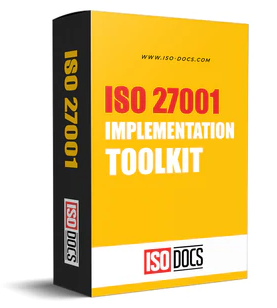The Structure of ISO/IEC 27001
Introduction
ISO/IEC 27001 is the leading structure for establishing, implementing, and ongoing improvement of an Information Security Management System (ISMS) in every organization. This international standard is one through which an organization could strengthen the security posture of the organization, besides which it also builds trust with clients, partners, and stakeholders through the systematic management of sensitive information. The organizations, in the wake of increasing threats digitally, are under immense pressure to protect their information assets. ISO/IEC 27001 is a prime standard for information security management, which is a very solid adaptable framework for evolving risks. The standard helps such organizations in the requirement of regulatory compliance, placeholder protection of intellectual property, and proactive mitigation of risks to ensure business continuity with increased confidence from stakeholders.

Overview Of ISO/IEC 27001 Structure
ISO/IEC 27001 consists of two major sections: the mandatory requirements in the main body and the security controls for reference in Annex A. The standard has undergone changes with time the latest revision, ISO/IEC 27001:2022, integrates clauses and updates control requirements to match today's complex threat environment.
The following are the clauses structure:
a) Main Clauses (Clauses 0–10)
-
Clause 0: Introduction- Establishes the scope and intent of the standard, linking it with related information security frameworks.
-
Clause 1: Scope- Defines the boundaries of the standard’s applicability in the organization.
-
Clause 2: Normative References- Lists additional standards and regulations referenced within ISO/IEC 27001.
-
Clause 3: Terms and Definitions- Explains key terms to ensure a common understanding across implementations.
b) Clauses for compliance:
-
Clause 4: Context of the Organization- The Scope of ISMS must be defined in detail, having considered organizational structure, objectives, stakeholder needs, and ISMS boundaries.
-
Clause 5: Leadership - This includes such obligations for leadership as commitment to information security, as well as setting objectives and assigning responsibilities.
-
Clause 6: Planning - Instructs organizations on risk assessment, objectives definition, and the selection of controls for risk treatment.
-
Clause 7: Support - Specifies necessary resources, personnel, awareness, communication, and documentation to support the ISMS.
-
Clause 8: Operation - Executing security plans, implementing controls, continued change management, and documenting processes.
-
Clause 9: Performance Evaluation - includes monitoring measurement, auditing and reviewing the effectiveness of an ISMS.
-
Clause 10: Improvement - Containing a requirement for continual improvement of the ISMS by the organization through continuous evaluation and learning from incidents.
Annex A: The Reference Control Set
Annex A is a section in ISO/IEC 27001 where a collection of 93 information security controls is grouped by type, each of which aims at mitigating information security risks. Each control further provides a means for organizations to act against potential threats along the three dimensions of confidentiality, integrity, and availability with respect to information:
The Four Themes of Annex A controls
-
A.5 - Organizational Controls: Define rules, policies, and governance measures for internal security (e.g., access control policy).
-
A.6 - People Controls: Focus on employee education, training, and skills to promote secure behavior.
-
A.7 - Physical Controls: Cover hardware and physical security measures such as CCTV and alarms.
-
A.8 - Technological Controls: Address technical safeguards such as encryption, software security, and defensive mechanisms.
The latest updates made by ISO/IEC 27001:2022 have condensed the control set from 114 to 93 ones by merging and revising the existing measures and by the addition of new controls encompassing threat intelligence, secure coding, and data leakage prevention.
Supporting Document: The Statement of Applicability (SoA)
An essential document required for ISO/IEC 27001 implementation is Statement of Applicability, that lists all the Annex A controls the organization has selected or omitted, along with justification for each. This ensures transparency and alignment between risk assessments and implemented controls.
Key Principles Underpinning ISO/IEC 27001 Standard
ISO/IEC 27001 is anchored to the Confidentiality, Integrity and Availability (CIA) triad:
-
Confidentiality: Ensures that only authorized persons are provided access to the sensitive data.
-
Integrity: Safeguarding the accuracy and completeness of information.
-
Availability: Guaranteeing that information is accessible when needed.
Familiarity With The Structure Of The Standard Helps
Understanding the framework of ISO/IEC 27001 is very important for organizations in compliance and implementation. It will:
-
Provide a clear understanding of the steps needed to establish an effective ISMS.
-
Encourage the management of risks and continuous improvement.
-
Link control measures applied to specific risk, operational requirement, and contextual needs.
ISO/IEC 27001 Standard Implementation Suggestions
For ISO/IEC 27001 implementation success:
-
Update and review the risk assessments and controls on a regular basis.
-
Engage leadership to build a strategic alignment.
-
Get focused on documentation and continuous learning.
Conclusion
Organizations with an understanding of the ISO/IEC 27001 structure, can lay a robust foundation for their information security efforts, thus supporting sustainable compliance and resilience in an unpredictable digital world. Executing the standard's structured clauses and controls secures compliance, but also goes on the offensive towards protecting information culture-wise.


